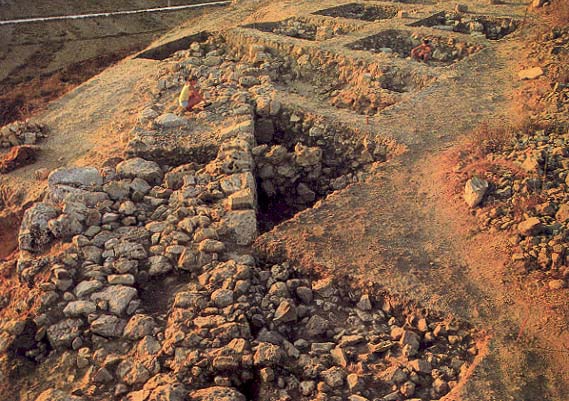Image Details

Moshe Weinberg, Michal Roche-Ben Ami and Israel Finkelstein
The Middle Bronze IIC (1650–1550 B.C.) city wall at Shiloh. The inner face of this wall is exposed on the left side of the excavated triangle in the center of the picture. The full width of the field stone wall—12 feet at this point—extends to the left of the excavated area; both edges of the wall are visible for a short distance on either side of the young woman.
In the foreground, within the ancient city, is a rough pebble floor. The exposed portion of floor is bordered by another excavation square—seen here as a triangle— and partly obscured by the lower edge of the picture. This floor was added in Iron Age I (12th to 11th centuries B.C.); it followed the upper course of the Middle Bronze IIC wall (see plan). By the Iron Age, accumulated settlement debris had raised the ground level of the city to the height of the enclosure wall. Crushed remains of large collar-rim jars strewn on this pebble floor gave archaeologists critical evidence for dating the floor.
